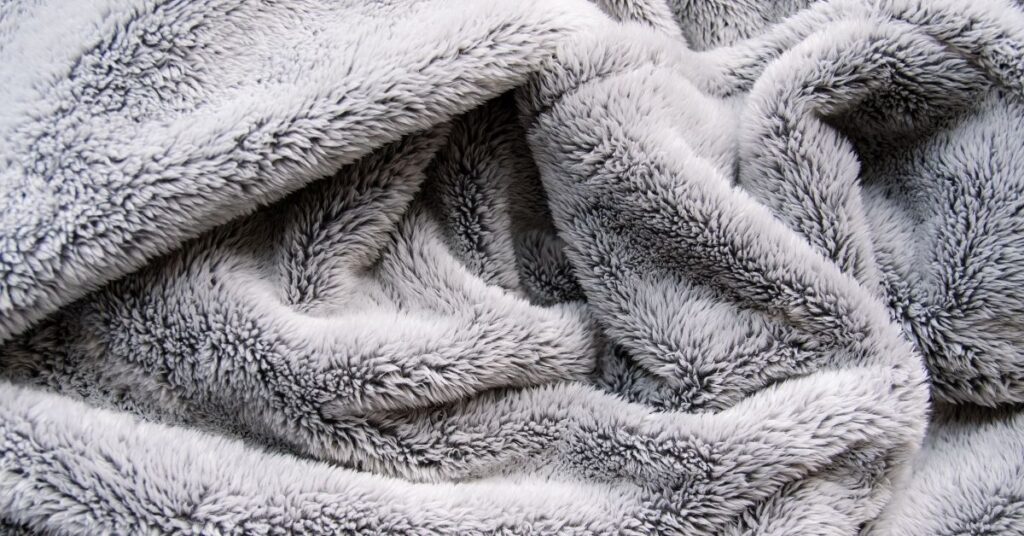Blankets gets static due to friction, low humidity, and synthetic materials.
Why Is My Blanket So Static?
Ugh, nothing’s worse than reaching for your favorite cozy blanket, only to get zapped by a jolt of static electricity. What gives? Why does a snuggly blanket suddenly turn into a miniature lightning storm? Well, let’s get to the bottom of this electrifying mystery.
Understanding Static Electricity
Static electricity is a buildup of electrical charge on a material’s surface. Atoms, the tiny building blocks of everything, are made up of even smaller bits – protons (positive charge), neutrons (neutral charge), and electrons (negative charge). Static happens when there’s an imbalance of those charges.
Think of rubbing a balloon on your head. Some of your hair’s electrons jump to the balloon, giving it a negative charge. Because opposites attract, your now positively-charged hair sticks to the balloon. It’s the same concept with your blanket!
Why Blankets Get Static
Here are the main reasons your blanket turns into a shock factory:
- Friction: Friction is the major culprit! When your blanket rubs against itself, your clothes, or other surfaces, electrons get transferred, causing a charge buildup. Wintertime = lots of shuffling around under those covers.
- Dry Air: Dry air doesn’t conduct electricity as well as humid air. So, with low humidity, those pesky static charges linger on your blanket, ready to ambush you at the slightest touch. Winter = low humidity, both inside and out.
- Synthetic Materials: Materials like polyester, fleece, and acrylic are notorious for generating static. They’re basically static magnets!
Table 1: Common Blanket Fabrics and Their Static Tendencies
| Fabric | Static Tendency | Notes |
| Cotton | Low | Natural fibers, less prone to buildup |
| Wool | Medium | Can create static, especially in dry air |
| Silk | Medium | Similar to wool |
| Polyester | High | Synthetic, very prone to static |
| Fleece | High | Ultra-soft, and ultra-static |
| Acrylic | High | Another infamous synthetic |
How to Instantly Reduce Static Cling
Don’t want to wait for laundry day? No worries! Here are some quick fixes to banish static cling in a flash:
- Metal Hanger: Rub a metal clothes hanger over the surface of your blanket to discharge it. Metal conducts electricity, so it helps whisk away the built-up charge.
- Safety Pin: Attach a closed safety pin to your blanket. The metal acts as a tiny lightning rod, gradually discharging the static buildup.
- Lotion: Rub a little bit of lotion on your hands or the area where you’re getting shocked. This tiny bit of moisture helps tame the static.
Long-Term Static Prevention Tips:
These tips will help keep the static shocks at bay:
- Choose Your Fabrics Wisely: Opt for natural fabrics like cotton or linen when possible. They’re far less prone to static buildup than synthetics.
- Wash Day Wonders:
- Fabric softener: Fabric softener sheets or liquid softeners coat fibers, reducing friction and the resulting static.
- White vinegar: Add a ½ cup of white vinegar to your wash cycle. It naturally softens fabrics and helps fight static cling.
More Long-Term Static Prevention Tips
- Humidify Your Home: A humidifier adds moisture to the air, reducing dry air’s role in creating static electricity. A comfy room and less static? Yes, please!
- Dryer Tricks
- Dryer Sheets: Their special coating helps reduce static in your blankets.
- Damp Washcloth: Toss a damp washcloth into the dryer for the last 10 minutes of the cycle. The steam will add some helpful moisture to the air.
- Don’t Over-Dry: Over-dried fabrics are more prone to static. Try taking your blanket out while it’s still slightly damp.
Table 2: Static Solutions at a Glance
| Problem | Solution |
| Instant Static Shock | Rub with a metal hanger, attach a safety pin, or apply a bit of lotion |
| Dry Air | Use a humidifier |
| Fabric Type | Choose natural fibers like cotton or linen |
| Laundering | Use fabric softener or white vinegar |
| Over-drying | Don’t over-dry your blankets, or add a damp washcloth in the final minutes |
Static and Pets
If you’ve got furry friends, you know that static can be an extra problem. Here’s why, and what to do about it:
- Fur is a Static Magnet: Pet fur, particularly thick undercoats, is prone to static build-up. If they snuggle under your blanket, they can transfer that static charge to the fabric!
- A Shocking Experience for Them Too: Static shocks aren’t just annoying for us, they can startle our pets! So, reducing blanket static benefits everyone.
- Solutions: Alongside all the previous tips, try these:
- Grooming: Regular brushing removes loose fur that can contribute to static.
- Pet Bed Material: Choose natural fiber bedding for your pet for less static risk
Table 3: Tips for Pet Owners
| Tip | Why It Works |
| Regular Brushing | Removes loose fur that can hold static |
| Humidify | Less static in the air, less risk to your pet from blankets |
| Natural Fibers | Choose blankets and pet beds made with natural materials |
Conclusion- Why Is My Blanket So Static?
So, why is your blanket so static? It’s a combination of friction, low humidity, and sometimes the materials themselves. But don’t worry – with a few simple tricks, you can tame those static shocks and enjoy a peaceful snuggle under your favorite blanket!
